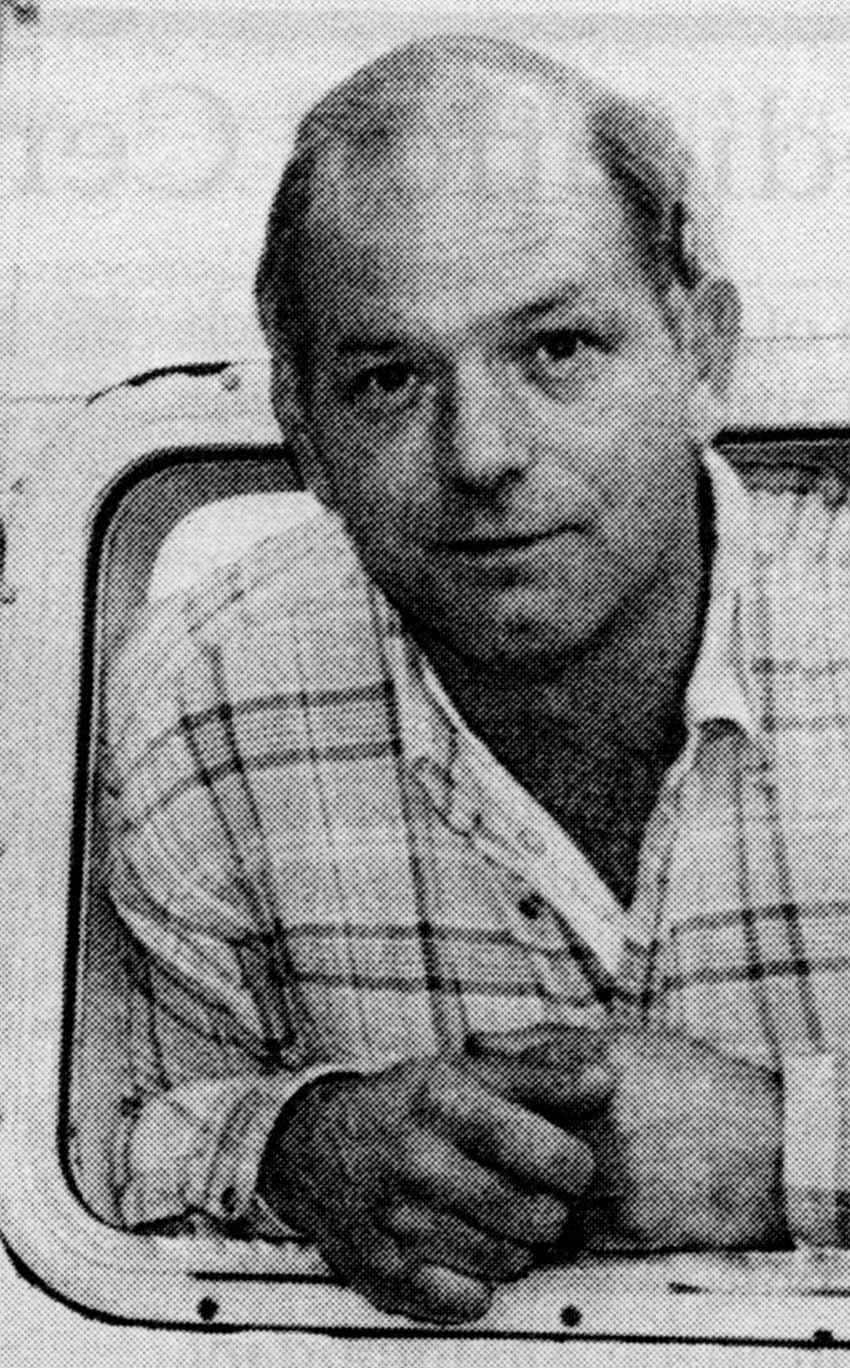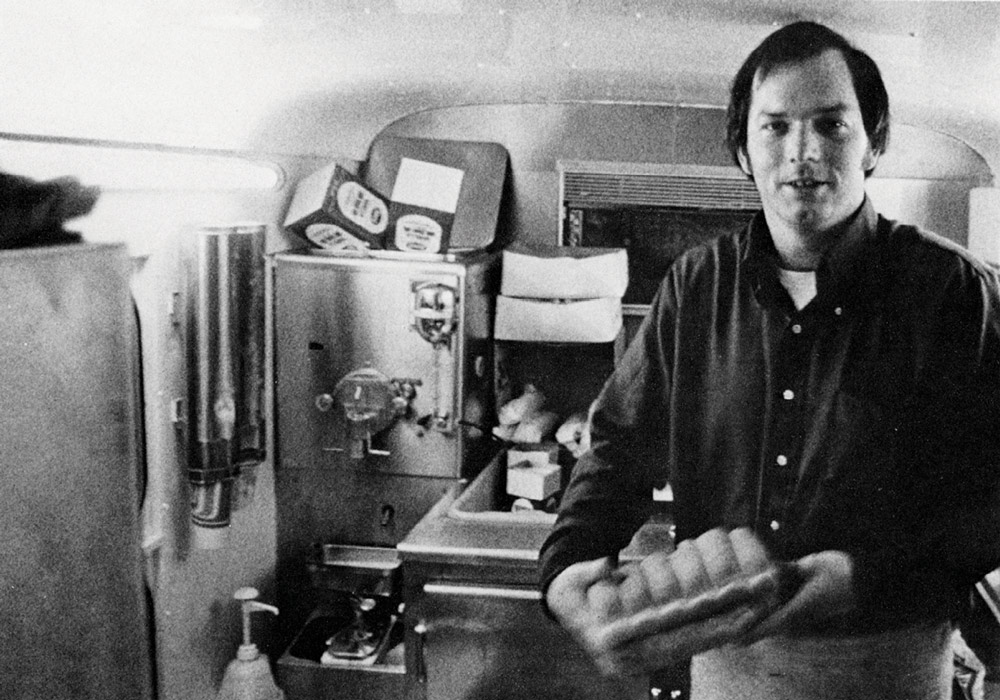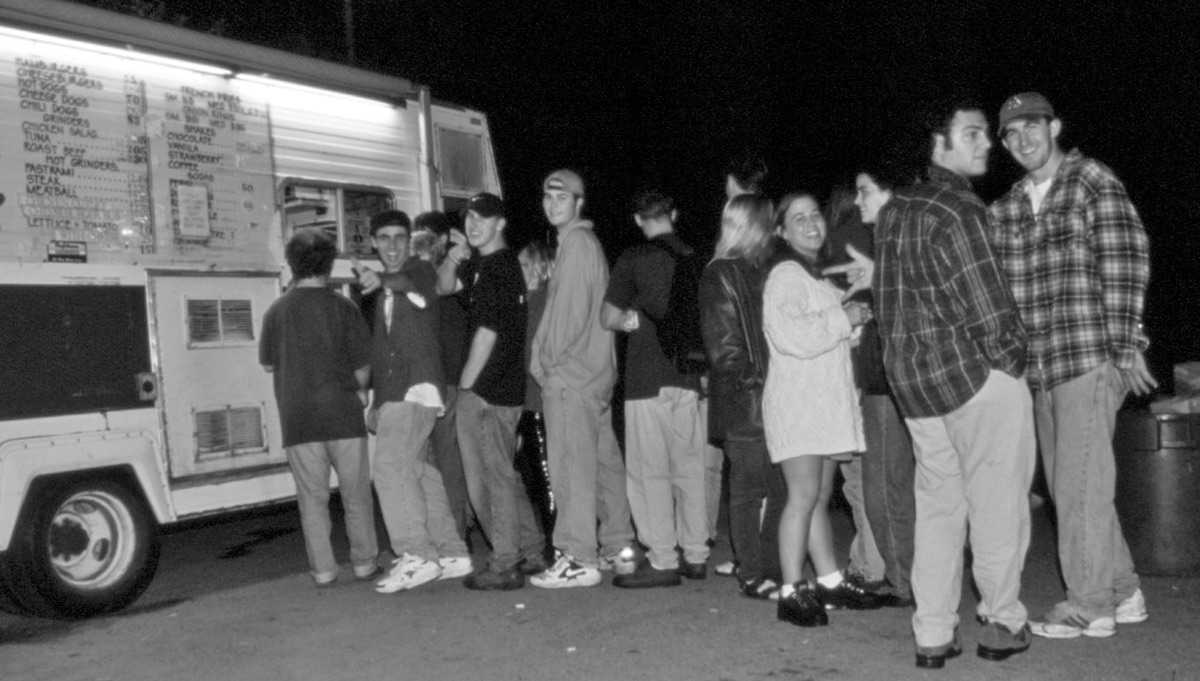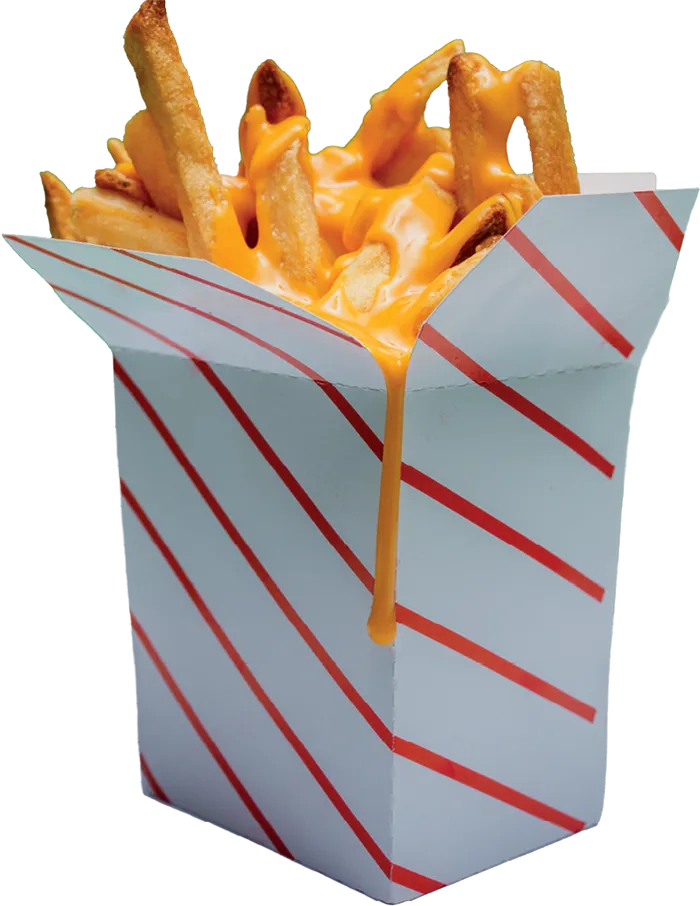The Karl’s Phenomenon

Michelle
Morrissey ’97


melted cheese sauce
burgers on a sub roll

“What does everyone want?” someone says. “Snotties” is the universal answer, followed with “a brown cow, two little guys, a big guy run through the garden” and other esoteric orders that, to anyone who wasn’t a Wildcat, wouldn’t make any sense.
What were we ordering?
A little bit of greasy, salty, fatty heaven, that’s what.
We were among the throngs of students who regularly visited Karl’s, the food-truck magnet parked in either the Quad or, later, C-Lot every night until the wee hours of the morning and serving up favorite college-student fast-food fare, most of it out of a fryolator; these were our younger years, before we worried too much what such late-night dietary decisions would eventually do to our arteries and waistlines.
And you certainly remember Karl Krecklow, a “short-order savant” as one alum nicknamed him, whose food truck was well ahead of the food-truck trend we all know today. He turned old campers into kitchens and kept generations of Wildcats happily fed from the mid-1960s to the late 1990s.

Karl, it seemed, was the one adult on campus who actually did suffer fools gladly.
And Karl welcomed us all — regulars were invited to huddle in the back of the truck to stay warm while they waited. For anyone, Karl put on a show, bouncing around, shouting out orders and bantering with customers.
But what is it that makes Karl’s such a memory touchstone for so many of us? It was fun, sure, but so were many of our college experiences. And the food was satisfying, but certainly not gourmet fare.
I reached out to some of UNH’s top researchers in the fields of memory and adolescence to find out why Karl’s is, for many of us, one of the first things we think of when we think about our time at UNH.
Professor Michelle Leichtman says part of the nostalgia for Karl’s goes beyond love — it’s scientific.
“Food memories, and especially smell memories, are privileged in the way they’re processed. They bypass the higher cortical structures of the brain, tapping directly into the limbic system of the brain,” says Leichtman, whose research in the College of Liberal Arts focuses on developmental psychology and memory development in educational and cultural contexts. “Those memories tap quite directly into the older, primitive parts of the brain that are involved in emotion.”
Professor Emeritus David Pillemer, who taught at UNH for nearly two decades, explains that there are two kinds of memory: episodic and semantic. Episodic memories are those that are specific: where you were when John F. Kennedy was shot, when you heard about the first plane hitting the World Trade Center on 9/11 or, in happier ways, when you found out a loved one was expecting a baby.
Semantic memories are more generalized and carry a repetition.
There might be a bit of both at play when it comes to Karl’s, he says.

He recalls his own version of Karl’s — it was Jimmy’s, a favorite of students and faculty alike at his alma mater, the University of Chicago. “It was a dump, and the owner was friendly but also edgy. But that was the place you went after a tough exam, after a date that didn’t work out or on a game day. It was where everyone went. It gave you a sense of camaraderie even if you were there alone.”
As we chatted, a similarity between Jimmy’s and Karl’s was clear: it wasn’t one thing, it was everything about the Karl’s experience — the food, the people, feeling like you belonged because you knew how to order extra onion rings or ketchup in a made-up vocabulary.

As Pillemer puts it: “In a way, maybe alumni feel that we were all in line at Karl’s.”
Both Pillemer and Leichtman talked about something called “the reminiscence bump.” It’s the term used to describe the trend in older adults (aka any of us over 40) to have increased or enhanced recollection for events that happened when we were young adults.
“Across a lifetime, we tend to have a greater density of those memories when we look back at our lives between the ages of 15 and 30,” Leichtman explains.
It seems the same nostalgia could be said for Karl himself. Just before his passing in 2018, his family shared via social media that he was reminiscing about his glory days at UNH. “I remember those nights just like they were yesterday, so thank you very much. [The] pleasure was all mine.”